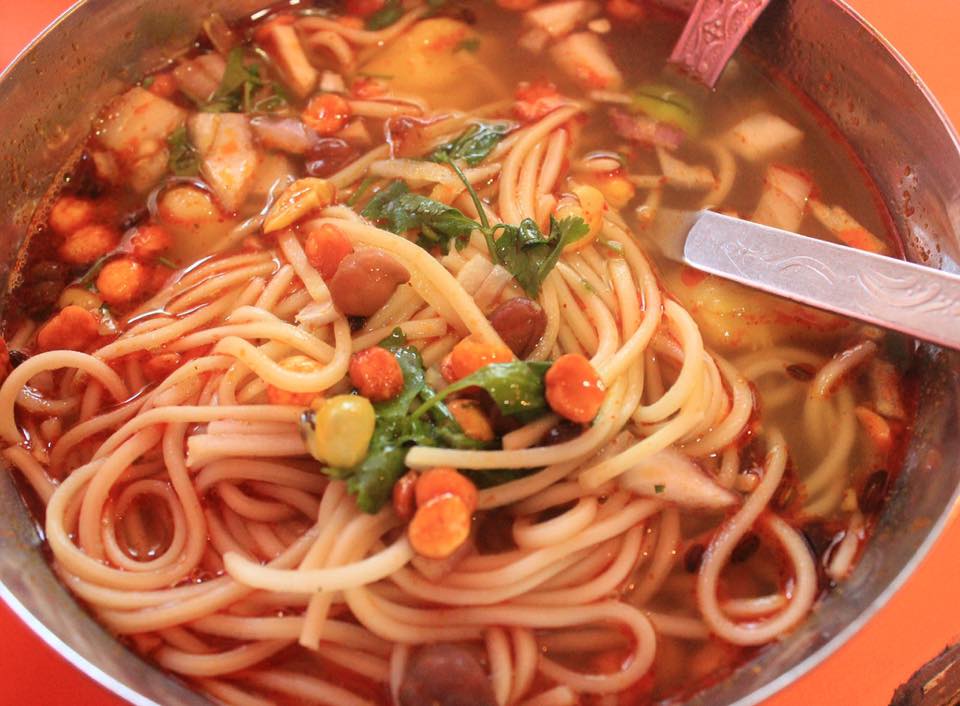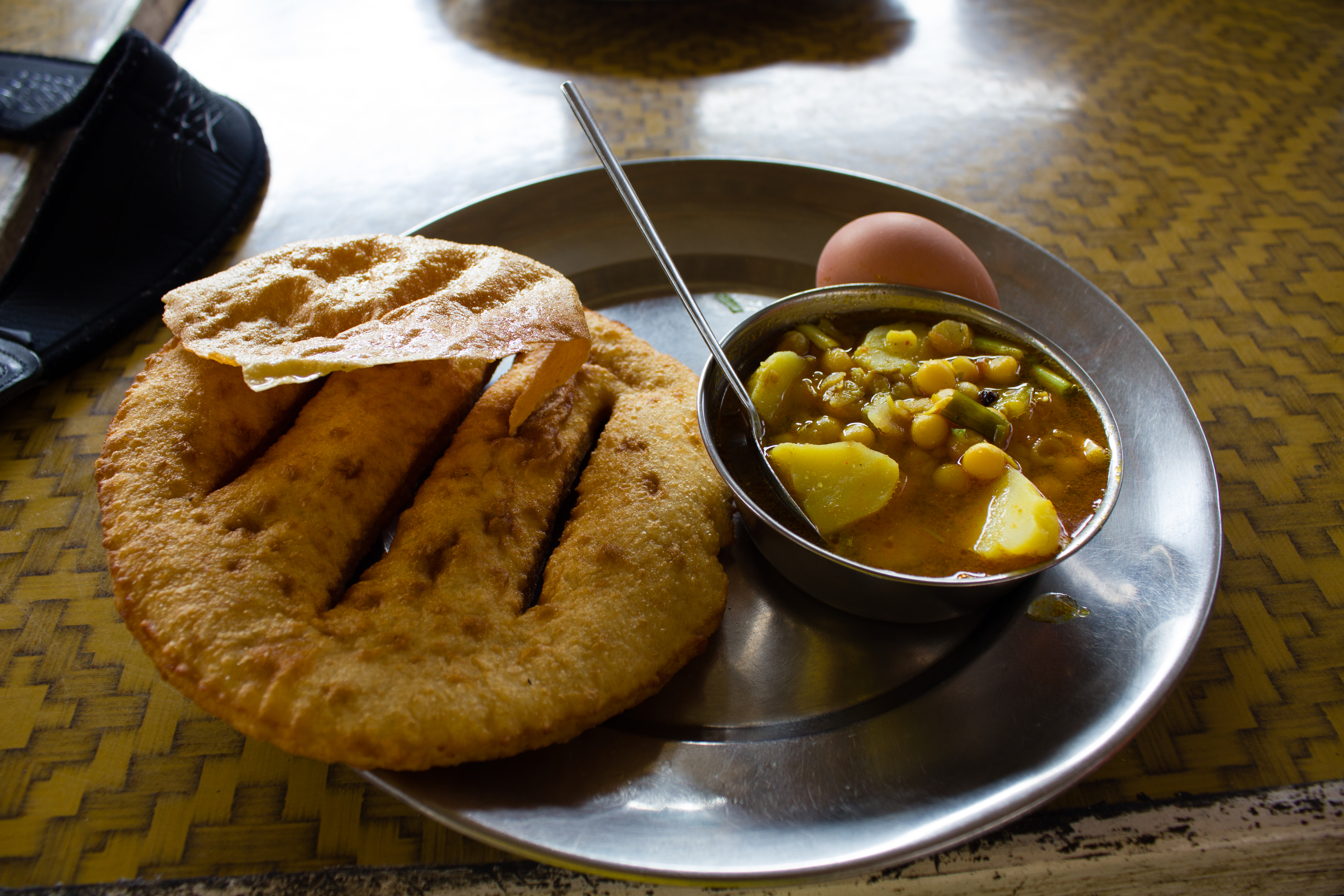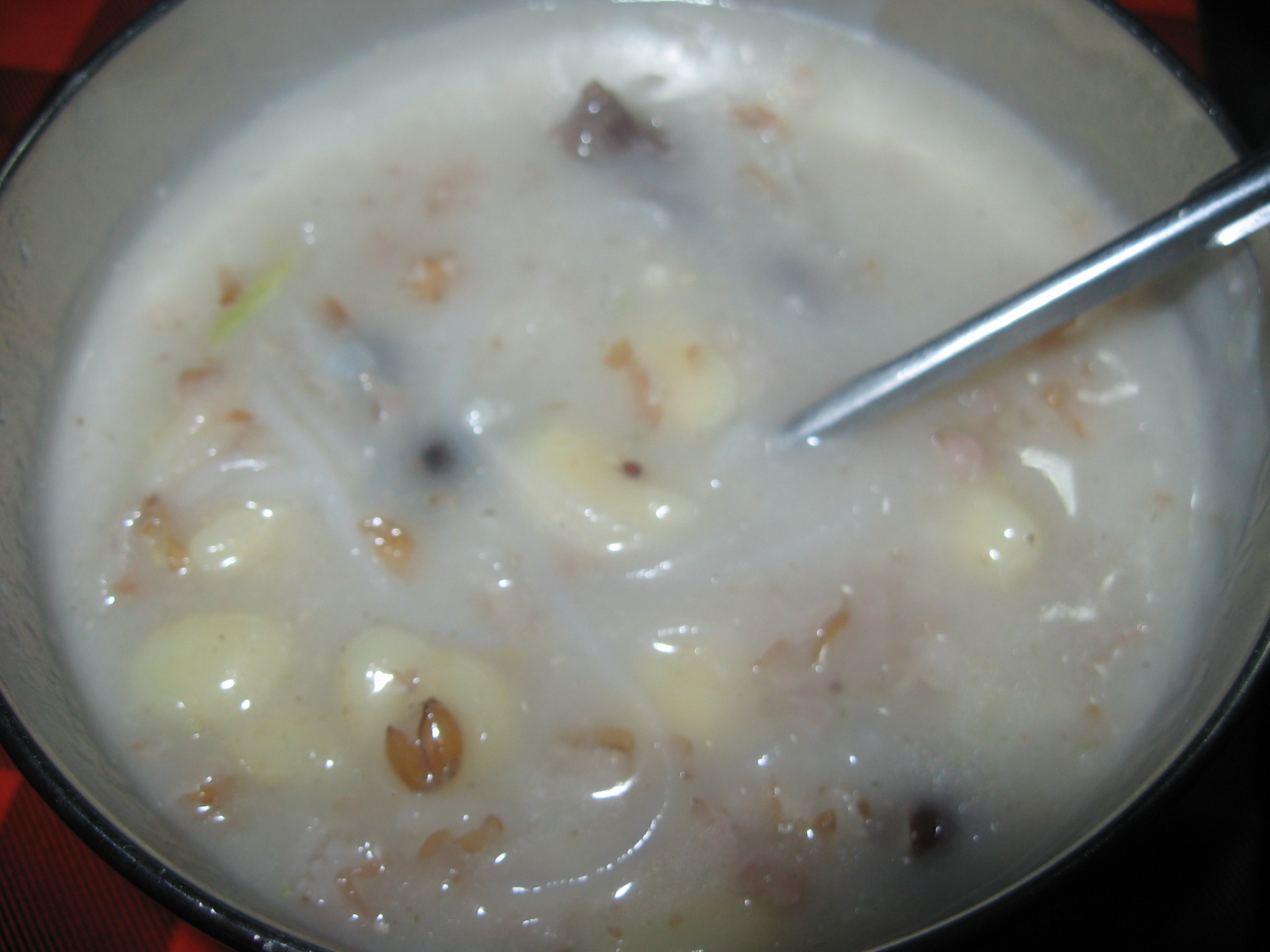|
Thukpa Bhatuk
''Thukpa bhatuk'' is a common Tibetan cuisine noodle soup that includes small ''bhatsa'' noodles. This dish is a common soup made in the winter but is especially important for Tibetan New Year. On Nyi-Shu-Gu, the eve of Losar (Tibetan New Year), the common Tibetan soup, ''thukpa bhatuk'' is made with special ingredients to form ''guthuk''. ''Guthuk'' is then eaten on Losar to symbolise getting rid of negativities of the past year and invite positives into the new year. Soup In the ''thukpa bhatuk'' soup, the main components are the handmade ''bhatsa'' noodles, which are similar to the Italian gnocchi. Some ''bhatsa'' noodles used for this soup are called ''gutsi rithuk'' and another noodle type is called ''bhatuk''. Both of these noodles are referred to as ''bhatuk'' in Central Tibet. Meat is usually a main ingredient in this soup, commonly mutton, beef or yak; however, this soup can also be made vegetarian with a vegetable bouillon. Customs Guthuk At the time of Tibetan New Yea ... [...More Info...] [...Related Items...] OR: [Wikipedia] [Google] [Baidu] |
Thukpa
Thukpa (Tibetan: ཐུག་པ ; ne, थुक्पा; IPA: /tʰu(k̚)ˀ˥˥.pə˥˥/ ) is a Nepali and Tibetan noodle soup, which originated in the eastern part of Tibet. ''Amdo thukpa'' (especially ''thenthuk'') is a famous variant among the Indians (especially Ladakhis and Sikkimis), Tibetans and Nepalese. ''Thukpa'' can be prepared in both vegetarian and non-vegetarian variations; the most popular non-vegetarian variation includes chicken. There are numerous varieties of ''thukpa'' which includes: * ''Thenthuk'' (): Hand-pulled noodle * ''Gyathuk'' (): Chinese noodle * ''Thuppa'' ( ne, थुप्पा) * ''Thugpa'' (): Hand-rolled pinched noodle (like gnocchi) * ''Drethug'' () Etymology Thukpa has been described as a "generic Tibetan word for any soup or stew combined with noodles." Regional traditions Indian thukpa In India, the dish is consumed by people of Nepalese and Tibetan origin in the state of Sikkim, the district of Darjeeling and in the union terr ... [...More Info...] [...Related Items...] OR: [Wikipedia] [Google] [Baidu] |
Tibetan Cuisine
Tibetan cuisine includes the culinary traditions and practices and its peoples. The cuisine reflects the Tibetan landscape of mountains and plateaus and includes influences from neighbors (including India and Nepal where many Tibetans abide). It is known for its use of noodles, goat, yak, mutton, dumplings, cheese (often from yak or goat milk), butter, yogurt (also from animals adapted to the Tibetan climate), and soups. Vegetarianism has been debated by religious practitioners since the 11th century but is not prevalent due to the difficulty of growing vegetables, and cultural traditions promoting consumption of meat. Crops must be able to grow at high altitudes, although a few areas are at low enough altitude to grow crops such as rice, oranges, bananas and lemons. The most important crop is barley. Flour milled from roasted barley, called ''tsampa'', is the staple food of Tibet, as well as ''Sha phaley'' (meat and cabbage in bread). ''Balep'' is Tibetan bread eaten for bre ... [...More Info...] [...Related Items...] OR: [Wikipedia] [Google] [Baidu] |
Soup
Soup is a primarily liquid food, generally served warm or hot (but may be cool or cold), that is made by combining ingredients of meat or vegetables with stock, milk, or water. Hot soups are additionally characterized by boiling solid ingredients in liquids in a pot until the flavors are extracted, forming a broth. Soups are similar to stews, and in some cases there may not be a clear distinction between the two; however, soups generally have more liquid (broth) than stews. In traditional French cuisine, soups are classified into two main groups: ''clear soups'' and ''thick soups''. The established French classifications of clear soups are ''bouillon'' and ''consommé''. Thick soups are classified depending upon the type of thickening agent used: ''purées'' are vegetable soups thickened with starch; '' bisques'' are made from puréed shellfish or vegetables thickened with cream; cream soups may be thickened with béchamel sauce; and '' veloutés'' are thickened with egg ... [...More Info...] [...Related Items...] OR: [Wikipedia] [Google] [Baidu] |
Nyi-Shu-Gu
Nyi Shu Gu is the eve before the last day of the Tibetan year (29th). It is celebrated with various traditions leading up to the Tibetan New Year: Losar. Guthuk is a common Tibetan cuisine noodle soup that is associated with Nyi Shu Gu. Thukpa bhatuk ''Thukpa bhatuk'' is a common Tibetan cuisine noodle soup that includes small ''bhatsa'' noodles. This dish is a common soup made in the winter but is especially important for Tibetan New Year. On Nyi-Shu-Gu, the eve of Losar (Tibetan New Year), t ... is the common style of noodle soup that becomes Guthuk when eaten with special ingredients and elements on Nyi Shu Gu. Nyi Shu Gu is a time to cleanse and bid adieu to negativities, obstacles, uncleanliness and sickness. A fire is traditional as is washing up. References {{reflist Tibetan festivals Food and drink festivals in Tibet Festivals in Tibet ... [...More Info...] [...Related Items...] OR: [Wikipedia] [Google] [Baidu] |
Losar
Losar (; "new year"William D. Crump, "Losar" in ''Encyclopedia of New Year's Holidays Worldwide'' (McFarland & Co.: 2008), pp. 237-38.) also known as Tibetan New Year, is a festival in Tibetan Buddhism. The holiday is celebrated on various dates depending on location (Tibet, Bhutan, Nepal, India) tradition. The holiday is a new year's festival, celebrated on the first day of the lunisolar Tibetan calendar, which corresponds to a date in February or March in the Gregorian calendar. In 2020, the new year commenced on the 24th of February and celebrations ran until the 26th of the same month. It also commenced the Year of the Male Iron Rat. The variation of the festival in Nepal is called ''Lhochhar'' and is observed about eight weeks earlier than the Tibetan Losar. History Losar predates the arrival of Buddhism in Tibet and has its roots in a winter incense-burning custom of the Bon religion. During the reign of the ninth Tibetan king, Pude Gungyal (317-398), it is said that ... [...More Info...] [...Related Items...] OR: [Wikipedia] [Google] [Baidu] |
Guthuk
Guthuk (Tibetan: , English: 'Gu= 9, Thuk= stew soup ' or 29 date of Bot calendar celebrate so called Guthuk) is a stew soup which has various types of ingredients like beans, vegetables, meat etc, or left over harvested grains is used for preparing in Sherpa or Tibetan cuisine. It is eaten two days before Losar, the Bot or Tibetan New Year and is a variation on thukpa bhatuk. The Tibetan religious ceremony Gutor (), literally meaning 'offering of the 29th', is held on the 29th of the 12th Bot or Tibetan month, and is focused on driving out all negativity, including evil spirits and misfortunes of the past year, and starting the new year in a peaceful and auspicious way. It is made with barley and other ingredients. Banishing evil spirits day The temples and monasteries throughout Tibet hold grand religious dance ceremonies, with the largest at Potala Palace in Lhasa. Families clean their houses on this day, decorate the rooms and eat . In the evening, the people carry torches, c ... [...More Info...] [...Related Items...] OR: [Wikipedia] [Google] [Baidu] |
Gnocchi
Gnocchi ( , , ; singular ''gnocco'') are a varied family of dumpling in Italian cuisine. They are made of small lumps of dough most traditionally composed of a simple combination of wheat flour, egg, salt, and potato. Variations of the dish supplement the simple recipe with flavour additives, such as semolina flour, cheese, breadcrumbs, cornmeal or similar ingredients, and possibly including herbs, vegetables, and other ingredients. Base ingredients may be substituted with alternatives such as sweet potatoes for potatoes or rice flour for wheat flour. Such variations are often considered to be non-traditional. Gnocchi are commonly cooked in salted boiling water and then dressed with various sauces. They are usually eaten as a first course (''primo piatto'') as an alternative to soups (''minestre'') or pasta, but they can also be served as a ''contorno'' (side dish) to some main courses. Common accompaniments of gnocchi include melted butter with sage, pesto, as well as vario ... [...More Info...] [...Related Items...] OR: [Wikipedia] [Google] [Baidu] |
Tibet
Tibet (; ''Böd''; ) is a region in East Asia, covering much of the Tibetan Plateau and spanning about . It is the traditional homeland of the Tibetan people. Also resident on the plateau are some other ethnic groups such as Monpa people, Monpa, Tamang people, Tamang, Qiang people, Qiang, Sherpa people, Sherpa and Lhoba peoples and now also considerable numbers of Han Chinese and Hui people, Hui settlers. Since Annexation of Tibet by the People's Republic of China, 1951, the entire plateau has been under the administration of the People's Republic of China, a major portion in the Tibet Autonomous Region, and other portions in the Qinghai and Sichuan provinces. Tibet is the highest region on Earth, with an average elevation of . Located in the Himalayas, the highest elevation in Tibet is Mount Everest, Earth's highest mountain, rising 8,848.86 m (29,032 ft) above sea level. The Tibetan Empire emerged in the 7th century. At its height in the 9th century, the Tibet ... [...More Info...] [...Related Items...] OR: [Wikipedia] [Google] [Baidu] |
Nepal
Nepal (; ne, नेपाल ), formerly the Federal Democratic Republic of Nepal ( ne, सङ्घीय लोकतान्त्रिक गणतन्त्र नेपाल ), is a landlocked country in South Asia. It is mainly situated in the Himalayas, but also includes parts of the Indo-Gangetic Plain, bordering the Tibet Autonomous Region of China to the north, and India in the south, east, and west, while it is narrowly separated from Bangladesh by the Siliguri Corridor, and from Bhutan by the Indian state of Sikkim. Nepal has a diverse geography, including fertile plains, subalpine forested hills, and eight of the world's ten tallest mountains, including Mount Everest, the highest point on Earth. Nepal is a multi-ethnic, multi-lingual, multi-religious and multi-cultural state, with Nepali as the official language. Kathmandu is the nation's capital and the largest city. The name "Nepal" is first recorded in texts from the Vedic period of the India ... [...More Info...] [...Related Items...] OR: [Wikipedia] [Google] [Baidu] |
Tibetan Calendar
The Tibetan calendar (), or Tibetan lunar calendar, is a lunisolar calendar, that is, the Tibetan year is composed of either 12 or 13 lunar months, each beginning and ending with a new moon. A thirteenth month is added every two or three years, so that an average Tibetan year is equal to the solar year. The Tibetan New Year celebration is Losar (). According to almanacs the year starts with the third Hor month. There were many different traditions in Tibet to fix the beginning of the year. The dates of Mongolian calendar are the same as the Tibetan calendar. Every month, certain dates in the Tibetan calendar have special significance for Buddhist practices. Likewise, certain months also have significance. Years There were different traditions of naming years () in Tibet. From the 12th century onwards, we observe the usage of two sixty-year cycles. The 60-year cycle is known as the Vṛhaspati cycle and was first introduced into Tibet by an Indian Buddhist by the name of Chandr ... [...More Info...] [...Related Items...] OR: [Wikipedia] [Google] [Baidu] |
Vikram Samvat
Vikram Samvat (IAST: ''Vikrama Samvat''; abbreviated VS) or Bikram Sambat B.S. and also known as the Vikrami calendar, is a Hindu calendar historically used in the Indian subcontinent. Vikram Samvat is generally 57 years ahead of Gregorian Calendar, except during January to April, when it is ahead by 56 years. Alongside Nepal Sambat, it is one of the two official calendars used in Nepal. In India, it is used in several states. The traditional Vikram Samvat calendar, as used in India, uses lunar months and solar sidereal years. The Nepali Bikram Sambat introduced in 1901 CE, also uses a solar sidereal year. History A number of ancient and medieval inscriptions used the Vikram Samvat. Although it was reportedly named after the legendary king Vikramaditya, the term "Vikrama Samvat" does not appear in the historical record before the 9th century; the same calendar system is found with other names, such as Krita and Malava. In colonial scholarship, the era was believed to be bas ... [...More Info...] [...Related Items...] OR: [Wikipedia] [Google] [Baidu] |
List Of Soups
This is a list of notable soups. Soups have been made since Ancient history, ancient times. Some soups are served with large chunks of meat or vegetables left in the liquid, while others are served as a broth. A broth is a flavored liquid usually derived from boiling a type of meat with bone, a spice mix, or a vegetable mix for a period of time in a Stock (food), stock. A potage is a category of thick soups, stews, or porridges, in some of which meat and vegetables are boiled together with water until they form a thick mush. Bisque (food), Bisques are heavy cream soups traditionally prepared with shellfish, but can be made with any type of seafood or other base ingredients. Cream soups are dairy based soups. Although they may be consumed on their own, or with a meal, the canned, condensed form of cream soup is sometimes used as a quick sauce in a variety of meat and pasta convenience food dishes, such as casseroles. Similar to bisques, chowders are thick soups usually containi ... [...More Info...] [...Related Items...] OR: [Wikipedia] [Google] [Baidu] |



_-_Soup_(1865).jpg)




